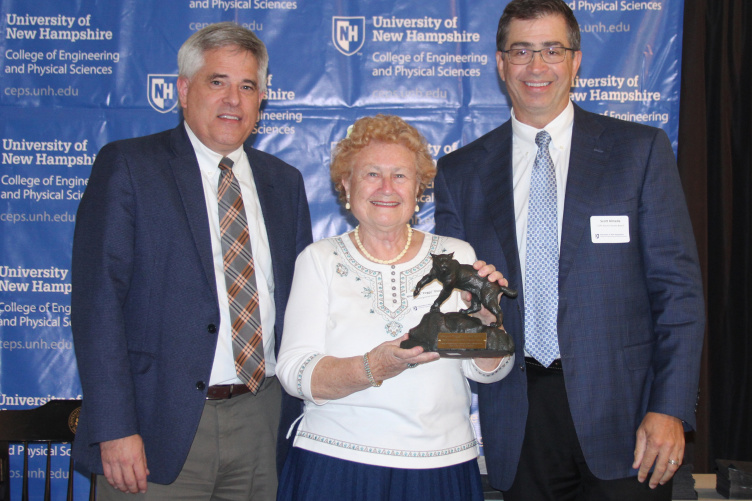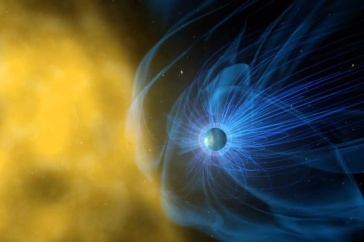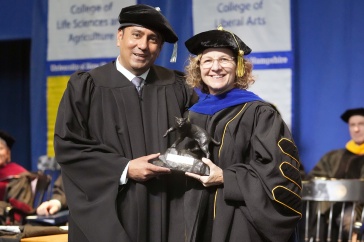
Margaret "Peggy" Ann Shea, D.Sc.,’58 ‘61G, was honored as the 2018 College of Engineering and Physical Sciences (CEPS) Distinguished Alumni Award recipient during a ceremony held Oct. 5. She received the award from Chuck Zercher, interim dean of CEPS, and Scott Almeda, president of the CEPS Alumni Society Board.
Bob Dylan once said, “The times they are a-changin’.”
That sentiment was no more evident than during the acceptance speech of Margaret "Peggy" Ann Shea, D.Sc.,’58 ‘61G, who was honored as the 2018 College of Engineering and Physical Sciences (CEPS) Distinguished Alumni Award recipient during a ceremony held Oct. 5.
When she entered the then-College of Technology she was one of just three females; during her speech, Shea addressed dozens of CEPS female scholarship award recipients in a college with more than 500 enrolled female students. During the ceremony, more than $650,000 in scholarships were awarded to 208 CEPS students.
“I am extremely proud to have been selected as the recipient,” says Shea, who became the first female to earn an advanced physics degree from UNH and received an honorary degree at the 2018 UNH commencement ceremony. “I certainly never expected I would be selected for this great honor.”
The CEPS Alumni Society gives the award annually in recognition of outstanding contributions to society with an emphasis placed on enhancing the image of UNH. Upon graduation, Shea built a decades-long prestigious career researching interplay between cosmic rays, solar particles and the Earth’s magnetic field. In 2001, she earned her doctorate in physics from the University of Tasmania, Australia, and was able to do much of this work alongside her husband, Don Smart, D.Sc.
Chuck Zercher, interim dean of the College of Engineering and Physical Sciences, says Shea is a role model and her story of professional growth is more than just a story of perseverance. “Her energy and passion reveal a deep commitment to science and discovery,” says Zercher. “Peggy is an exceptional scientist who has dedicated countless hours to the support of colleagues and her profession.”
Shea spoke of the journey and challenges she had to overcome in the early stages of her academic and professional career, including being discouraged by some in her field to pursue the path she did. Yet, she persisted in the goals she set for herself and continued to pick the battles she felt worth fighting — advice she offered to current students. Though she admits she didn’t win every battle, she was determined to learn from every experience.
“Your goals will change with time, but always keep a goal toward which you are working,” says Shea. “Don't be afraid of hard work; treat others with respect and always give credit to those who deserve it.”
Shea authored or co-authored more than 400 scientific papers, edited the journal Advances in Space Research and won numerous awards, including the American Geophysical Union’s Waldo E. Smith Medal for extraordinary service to geophysics, the Soviet Union Academy of Science’s commemorative medal honoring 100 years of international geophysics and the COSPAR Distinguished Service Medal. She was selected as a foreign associate of the Royal Astronomical Society and is an academician of the International Academy of Astronautics. Among her scientific achievements, she developed the geomagnetic cutoff rigidity tables that are the international standard used by NASA and the FAA to determine radiation exposure of astronauts and airline crews in flight.
“The fact that these values are being used in programs by NASA and the FAA — as well as by airlines in other countries — is a testament to the value of the work,” says Shea. “While the values will change with time, the method has proved to be the standard method for future calculations.”
-
Written By:
Brooks Payette | College of Engineering and Physical Sciences


















































